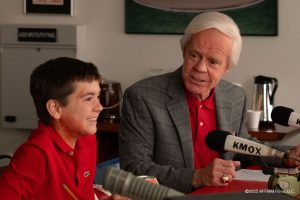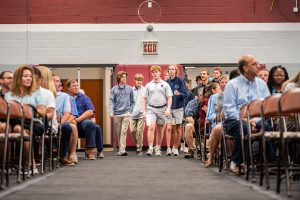Our dependence on cars spells the end for our environment
November 25, 2022
In 1939, at the New York World’s Fair, a new world was revealed. Industrial Designer Norman Bel Geddes and General Motors created Futurama: a 30,000-square-foot model of America’s future. Sitting in a chair on a conveyor belt, people would watch this “world of tomorrow” in its small, yet intricate scale, whilst a narrator explained what was being presented. GM saw blood in the water, and like a hungry shark, was ready to attack. It was fully aware of the significant market cars would be, and pounced on the opportunity to display the personal freedom these cars would bring. Unfortunately, Futurama could not foresee car-dependent suburbia, and failed to provide its hypothetical citizens with basic public transit. Futurama, with its utopian vision now represents an unfortunate turning point for the United States; succumbing to the automotive industry and the mass diversion away from urban cores.
Flash forward about nine decades, we are trying to find our way out of the mess that the automotive industry created. After the second World War, crime risk, pollution, (or racist tendencies) led to the flight of urban citizens to the suburbs. The geometrically ordered and insulated boarded suburbs were made possible by the Federal Highway Act of 1956, which stands as the largest federal project in the country’s history. The Government generously covered 90% of costs for these new highway systems, leaving cities on the hook for the remaining 10% and, most importantly, maintenance costs.
Not only did the highway project divert large droves of urban populations away from downtown areas, but it also forced these cities to grow outwards beyond their financial ability. This is the core problem of suburbs; if seclusion, segregation, and inefficient living aren’t enough, the detrimental finances inherited by suburbs will suck treasuries dry. Suburbs have to grow to maintain their financial well-being. A ponzi scheme. Since roads, water lines, and sewers are massively expensive to upkeep, the suburban scheme must keep growing to pay for the maintenance of other suburbs. This growth has resulted in an estimated $5 trillion infrastructure maintenance necessity, without including mostly eroding led pipes, minor streets, and sidewalks. Even with an unprecedented infrastructure bill like the one just signed, cities and states will need multiples of what they’re actually getting.
Gone are the days of streetcars and the idea of streets being gathering places. Urban cores are shattered and divided by concrete jungles, wide streets, and invasive parking lots. We are living in the automotive industry’s vision of America, where isolation and the incessant need for a car burdens our daily routine. Cars disrupt interaction, noise pollution has detrimental effects on mental health and willingness to socialize. The automotive industry has hazed America for nearly a century, and with the significant investment in electric car infrastructure, we seem to be doubling down on our losses. Without advances in public transit and a more connected passenger rail system, our overspreading will reach the point of no return. This will be both financially and environmentally detrimental.









Colby Quinn • Nov 28, 2022 at 8:33 pm
Fantastic writing! Would love to hear more…